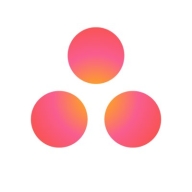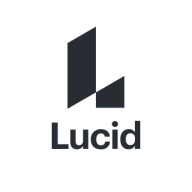

Find out what your peers are saying about Atlassian, monday.com, Microsoft and others in Project Management Software.
| Product | Market Share (%) |
|---|---|
| Asana | 4.9% |
| monday.com for Enterprise | 7.9% |
| Jira | 7.5% |
| Other | 79.7% |
| Product | Market Share (%) |
|---|---|
| Lucidchart | 24.8% |
| Visio | 29.6% |
| draw.io | 16.0% |
| Other | 29.599999999999994% |


| Company Size | Count |
|---|---|
| Small Business | 38 |
| Midsize Enterprise | 7 |
| Large Enterprise | 6 |
| Company Size | Count |
|---|---|
| Small Business | 23 |
| Midsize Enterprise | 14 |
| Large Enterprise | 21 |
Asana is web-based software-as-a-service that helps teams coordinate and manage their work. It helps companies move faster by making sure everyone knows the team’s plan and process and who is doing what by when.
Each user can create projects using a list, board, calendar, or timeline view. Within each project, users can add tasks, subtasks, sections, comments, attachments, start and due dates, and custom fields. Project and task followers get notifications on changes or comments on the project and/or task in their Inbox. Individual users can see all of the tasks they're responsible for across all of their projects in a view called My Tasks.
Asana is available in English, French, Spanish, German, and Portuguese.
Our online diagram application makes it easy to sketch and share professional flowchart diagrams. From brainstorming to project management, we support all of your communication needs. That’s why millions of users choose Lucidchart.
We monitor all Project Management Software reviews to prevent fraudulent reviews and keep review quality high. We do not post reviews by company employees or direct competitors. We validate each review for authenticity via cross-reference with LinkedIn, and personal follow-up with the reviewer when necessary.